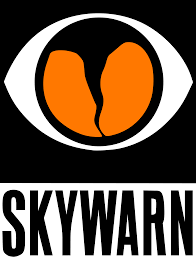FIeld Day and EMCOMM
- Details
Field Day is viewed by some operators as a fun weekend of contesting, some as an educational event, some as an opportunity to practice their operating skills, and by others as a weekend of insanity.
It is all of those things, and one more, an opportunity to test our EMCOMM skills. Just as in an emergency, Field day tests our ability to setup, troubleshoot, and operate radio equipment in a remote location in a short period of time. The short setup and operating windows, remote location, and long hours add stress and fatigue to the mix, approximating emergency operations pretty well. Of course, the bigger your team the easier it is, educating us on the value of having as many participants as possible.
ARRL defines the objective of field day as follows: To work as many stations as possible on any and all amateur bands (excluding the 60, 30, 17, and 12-meter bands) and to learn to operate in abnormal situations in less than optimal conditions. Field Day is open to all amateurs in the areas covered by the ARRL/RAC Field Organizations and countries within IARU Region 2.
The event takes place on the last full weekend of June from 1800UTC Saturday (2PM local) until 2059UTC Sunday (5:59PM), with some limited setup allowed on Friday.
Maintenance – A Key To Preparedness
- Details
As amateur radio operators interested in Emergency Communications, we spend a considerable amount of time discussing our radio gear, go-kits, antennas and other equipment we’ve either already accumulated, are about to acquire, or wish we could acquire.
Unfortunately, we often do little to maintain these items once we have them. At least, that’s been true for myself and some other people I’ve worked with. I guess it’s just human nature – and a recipe for trouble.
A few years ago I had my old-beater van stop rolling down the road. Ironically, Gerald (W34RWT) had mentioned hearing a roaring noise coming from the passenger side of my van as we were driving down a highway and he slowed to exit to the interstate. I knew something was going on there but a previous visit to a mechanic found nothing and I shrugged it off. Sure enough, the symptoms I had already seen and the noise that concerned Gerald turned out to be the axle shearing. A little more aggressive work finding the problem would have saved me a towing fee.
Now, you would think the previous story is a lead-in for why we need to be sure our equipment is in operating order. It should be, but its really just setting up for the real story.
EMCOMM and Nets
- Details
As amateur radio operators we may involve ourselves in public service in many different ways, whether as a storm spotter, part of a search team, as a stop on bike rides or runs, or delivering messages when normal communications systems are overloaded. But the one thing all of these tasks have in common is the fact communications is often managed via a net.
Depending upon the nature of the emergency there may be several concurrent nets running at different levels. Here are some examples:
Weather Nets
When the National Weather Service activates their storm spotters they will often activate our regional linked repeater network. The Linked Repeater Network consists of a group of repeaters that have secondary transceivers on them, allowing them to link together to create an expanded area where any traffic on any one repeater is heard on all.
However, if every amateur radio storm spotter reported on that net it would quickly become overloaded. Additionally, there is often the need to communicate local information that is not appropriate for a regional net. The solution is for each county or city to operate a local net and relay weather conditions that meet NWS reporting requirements.
Fox Hunting: Training for SAR
- Details
This topic is based upon a presentation made by WD8LQT (John Playford) at a West Georgia Amateur Radio Club meeting, in preparation for an upcoming “Fox Hunt”.
“Fox Hunting” is a fun hide-and-seek using radio that also provides practice in locating malfunctioning transmitters, generators of harmful interference, and even lost people & downed aircraft.
In a “fox hunt” the “fox” hides a radio transmitter for the hunters to locate. The radio usually transmits a message for a period of time (30 seconds to a minute), followed by an equal period of silence. The message is often a Morse Code ID of the unit and/or an audio message identifying the station.
Hunters can use a variety of equipment, ranging from a simple scanner to elaborate receivers that will literally point the hunter towards the signal by measuring the time difference between signal receipt between two antennas. We'll cover a few of the basic techniques used now, but before we do it's important to keep in mind that all the different options have strengths and weaknesses:
Emergency Locator Transmitters
- Details
ELTs, or Emergency Locator Transmitters, are Search and Rescue devices utilized in aviation and marine environments. Other similar technologies include EPIRBs (Emergency Position Indicating Radio Beacons) and PLBs (Personal Locator Beacons).
I've covered emergency radio frequencies in a previous presentation entitled “International Distress Frequencies”, but much of that also includes maritime and as the title implies, international radio communications protocols. In this area the most likely distress signal will be aviation related.
Aircraft use one of two types of Search and Rescue (SAR) distress systems: Legacy “analog” ELTs or the new 406Mhz digital ELTs.
The new 406Mhz ELTs are satellite monitored and can, optionally, transmit GPS information. Satellites can localize the signal to a small geographical area utilizing Doppler Shift, although these ELTs can also transmit GPS data.
Page 8 of 12




